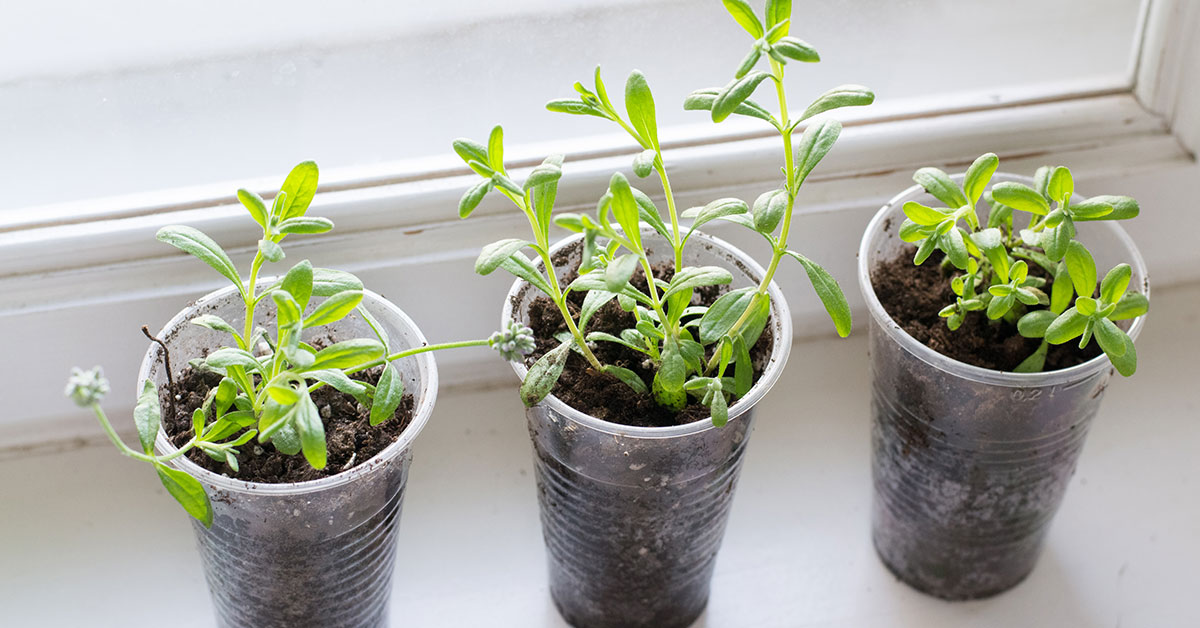Growing lavender from seed is an incredibly rewarding experience for any gardener. It is a beautiful, fragrant herb that can add a unique touch to any garden or landscape. Not only is it easy to grow from seed, but it also requires very little maintenance once established. Planting lavender from seed is a great way to bring a pleasant, calming scent to your outdoor space. In this article, we will discuss the basics of growing lavender from seed and provide helpful tips for success.
When To Start Lavender Seeds Indoors
When starting lavender seeds indoors, it is important to select soil that is well-draining and has enough nutrients to support the vigorous growth of the plant. The best soil for growing lavender seeds indoors is a combination of equal parts of potting soil, perlite, and sand. This soil combines the nutrients of the potting soil with the drainage of the perlite and the aeration of the sand. Creating a perfect environment for the lavender seeds to germinate and flourish, you’ll find that growing lavender from seed is quite easy.
You should also take into consideration that lavender tends to thrive in USDA hardiness zones 5-9. If you live in an area with a short growing season, starting seeds indoors gives you more control over the growing environment. As well as giving your plants a better chance of survival when you transplant them outside. To get the best results, it is best to start lavender seeds indoors 6-8 weeks before your last frost date. Plant the seeds in a good quality seed starting soil in a shallow container and make sure to keep the soil moist, warm, and well-lit. With the right conditions, your lavender seeds should sprout in 7-14 days and be ready to transplant outdoors when the weather is right.
Additional Resource: 11 Best Companion Plants For Lavender
When To Transplant Lavender Seeds Outdoors
The best time of year to transplant lavender seedlings outdoors is in late spring when the soil has warmed up and the nights are still cool. As lavender is a Mediterranean plant, it will thrive in a sunny, well-drained position. When transplanting lavender seedlings, ensure that the soil is kept moist until the seedlings are established. Plant the seedlings at least 18 inches apart to allow them room to spread their roots and grow. Water the seedlings regularly, at least once a week, and add a layer of mulch to retain moisture and keep the soil cool. With proper care, you should have beautiful lavender plants in just a few weeks.
Providing aftercare for transplanted lavender seedlings outdoors is relatively easy. Start by making sure the lavender is planted in an area that receives full sun and has well-draining soil. Lavender prefers soil that is slightly alkaline, so if the soil is not naturally this way, you can mix in some lime or wood ash to make it so. Water the lavender deeply and regularly, but avoid overwatering. Once the plants are established, you can prune them to encourage bushier growth and keep them looking their best. If they become too woody, you can replace them with new lavender seedlings. Finally, it is important to protect the lavender from extreme temperatures, either by using a windbreak or covering the plants during cold weather. With proper care, your lavender will flourish and bring beautiful, fragrant blooms to your garden for years to come.
Additional Resources: How To Grow Lavender Plants In Pots
Monitor For Pests And Diseases
Freshly transplanted lavender seedlings outdoors should be monitored for pests and diseases that can harm them. Common pests include aphids, whiteflies, thrips, spider mites, and mealybugs. Signs of infestation include discoloration, wilting, and distorted growth of the lavender plants. Diseases to look out for include root rot, powdery mildew, leaf spot, and downy mildew. To prevent and cure any infestations or diseases, it is important to use integrated pest management solutions. Such as introducing natural predators, using insecticidal soap, and practicing crop rotation. Additionally, lavender should be planted in a sunny, well-drained area and watered regularly to encourage healthy growth. Finally, it is important to inspect the lavender seedlings regularly and take action to remove any pests or diseases as soon as they are detected.
When pruning freshly transplanted lavender outdoors, it is important to start the process as soon as the plant is settled into its new environment. Begin by cutting off any dead or wilted stems and leaves. This will help encourage new growth and keep the plant healthy. Once the dead material is removed, you can begin trimming the plant back by about one-third of its total height. This will ensure that the plant remains an attractive size and shape. When cutting, make sure to use clean, sharp pruning shears and make sure to cut just above the leaf nodes. This will help encourage the growth of new stems and foliage. Finally, remove any flower buds that may be present so that the plant can focus its energy on new growth instead of flowering.













